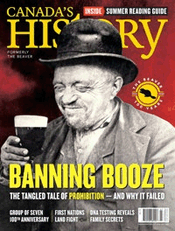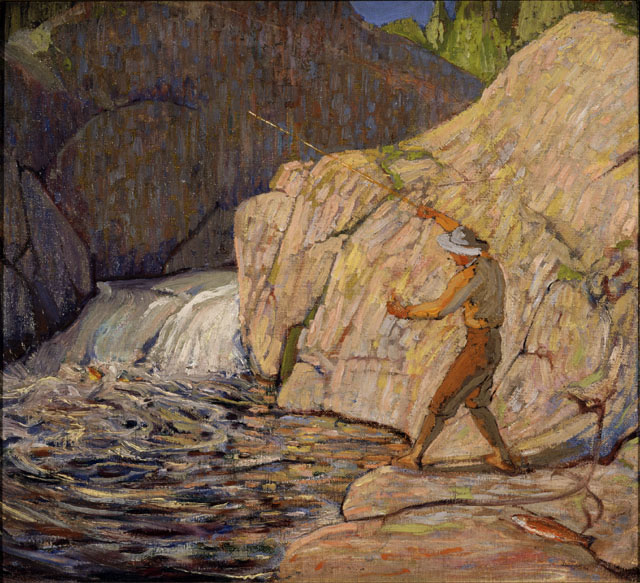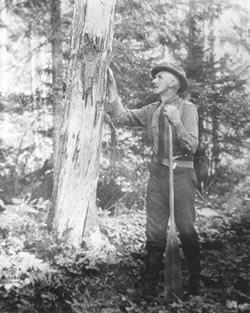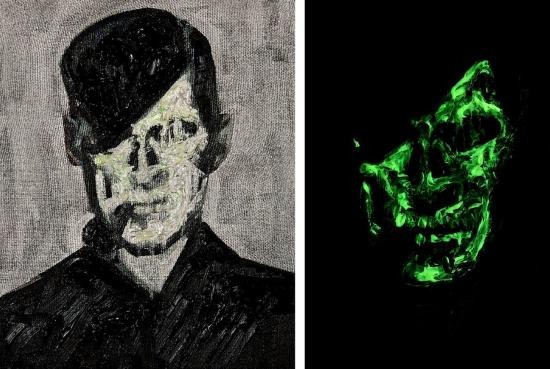Wednesday, December 14, 2016
"Many Deaths.." included in Writers' Trust of Canada, Best Books of 2016
http://www.writerstrust.com/Home/Recommended-Reading/2016-Best-Books-of-the-Year.aspx
Many Deaths of Tom Thomson was recommended by Debra Komar, former forensic pathologist, author of Bastard of Fort Stikine and Black River Road, among other titles. Komar is also the recipient of the 2015 Canadian Authors Association Canadian History award.
Wednesday, December 7, 2016
24 Jan. 2017: Arts & Letters Club, Toronto, ON
Members only event.
14 Elm Street
Toronto, Ontario
Canada
M5G 1G7
Arts & Letters Club's months agenda can be found here:
http://www.artsandlettersclub.ca/index.cfm?pagepath=&id=48419
23 January 2017: History Lecture Series, Upper Grand District School Board Continuing Education program
Centennial Collegiate Vocational Institute
289 College Ave. West, Guelph, ON
Room B104
For more information, see pg. 3 of Course Guide for Guelph & Centre Wellington:
http://www.ugdsb.on.ca/continuing_education/article.aspx?id=49149
Tuesday, November 15, 2016
Canada's History magazine review of 'Many Deaths of Tom Thomson'
Tuesday, November 1, 2016
1 Dec. 2016: Many Deaths of Tom Thomson at Presteign-Woodbine United Church, Toronto, ON
Admission: $7
Discover Your Heritage, Seniors
Presteign-Woodbine United Church
2538 St. Clair Ave. E.,
Toronto ON,
M4B 3A8
http://www.presteignwoodbineuc.com/calendar.php
1 Nov. 2016: Many Deaths of Tom Thomson at Leaside Public Library, Toronto, ON
Admission: $5
Discover Your Heritage, Seniors
Leaside Public Library
165 McRae Drive
Toronto, ON
M4G 1S8
Friday, October 7, 2016
21 Oct.: Many Deaths of Tom Thomson at University of Guelph Rural History Roundtable
Monday, September 19, 2016
Tom Thomson - Suicide? History of a flawed idea.
---
All of the links for this post direct back to excerpts of transcribed historical documents provided on the website Death On A Painted Lake: The Tom Thomson Tragedy. Gregory Klages was Research Director for the site, launched by the Great Unsolved Mysteries in Canadian History project in 2008. Klages is the author of the 2016 book, The Many Deaths of Tom Thomson: Separating Fact from Fiction (Dundurn Press).
Friday, August 26, 2016
Writer Mark Reynolds reviews "Many Deaths…" for Christopher Moore's blog
Reynolds says:
"Klages' mission was to rip up th[e] overgrowth of supposition away from the record, and then trace the vines and roots of each to disentangle them from the truth. As such, reading the book is less like reading a conventional history that it is akin to sitting in the jury while a very thorough prosecutor methodically, rigorously and uncompromisingly builds a case. No witness, no piece of evidence is left without having its credibility or provenance examined to the minutest degree."
Regarding Klages' assessment of one popular writer's work on Thomson, Reynolds offers:
"...the ruthlessness with which Klages reveals the speculation, sloppy research and unsupported family legend through which the author has polluted the public understanding of Thomson’s story was a tour de force of rigorous history over sensationalizing careerism."
Wednesday, August 17, 2016
Award-winning author Debra Komar reviews MDTT on Goodreads
"I have read many books on the subject and this is the most even-handed account available. Klages ...does a great job of tracing the origins of the narratives [regarding Thomson] that persist in Canadian history. The book is better written than any of its predecessors and is competently researched. ...the book is interesting, surprisingly fast-paced and lean, and worth a read."
Update: pictures from summer 2016 'Many Deaths of Tom Thomson' author talks
Monday, August 8, 2016
Interview: CBC Radio's "Fresh Air" re: Many Deaths of Tom Thomson
Friday, July 15, 2016
#6 on National Post Bestseller list for Non-Fiction
Thursday, July 7, 2016
Tom Thomson: Murdered? History of a flawed idea.
In July 1917, Dr. G. Howland, who was holidaying in Algonquin Park and who was called upon to examine Thomson's remains, concluded that Thomson died by drowning. At the time, neither he, Park Ranger Mark Robinson (who supervised the search for Thomson), the coroner, nor the Park Superintendant recorded any suggestions that Thomson's death had been anything other than an accident (no one else recorded them making such suggestions either).
Going public with suspicions
The first investigator to publicly claim that Thomson had suffered fatal violence was Blodwen Davies. In summer 1931, she asked Ontario’s Attorney General to excavate Thomson’s original Algonquin Park burial place, on the grounds that the coroner’s conclusion of ‘accidental drowning’ was wrong. Davies argued that evidence taken in 1917 clearly pointed to Thomson having sustained a fatal blow to his head. She repeated this claim in her self-published book, A Study of Tom Thomson, the second she devoted to Thomson.
In the 1950s, a conversation with a group of people (likely at Canoe Lake) was recorded on audio tape. During this conversation, Mark Robinson offered that Tom Thomson's temple clearly showed signs of violence. This is the first record we have of Robinson offering such an assertion. He does not make similar statements in his testimony from 1917, or during the 1930s.
A conspiracy theory re-emerges
The murder theory really blossomed as an explanation during the late 1960s. A 1969 CBC documentary and a 1970 book suggested that Thomson had been killed. While the documentary - Was Tom Thomson Murdered? - is pretty much forgotten today, the book – William Little’s The Tom Thomson Mystery – provided many of the claims upon which proponents of the murder theory continue to build their case.
Acrobatic adaptations
The contemporary writer who stands at the forefront of proposals that Thomson was murdered is Roy MacGregor. MacGregor is Canada’s most prolific author regarding the case, having produced magazine articles, a fiction book (published twice, under different titles), and most recently, a non-fiction book devoted to Thomson’s death.
During the late 1970s, MacGregor suggested that Thomson might have been killed in a fight on the night of Saturday, July 7. This is an interesting theory, but evidence points to several people, Mark Robinson included, having seen Thomson on the following morning, July 8.
In his 2010 book, MacGregor adjusted his argument that Thomson was murdered to fit with the evidence that Thomson was seen on the morning of Sunday, July 8. In his revised theory, MacGregor suggested that Thomson might have returned to Canoe Lake, seen by few, on the night of Sunday, July 8. Upon his return, according to MacGregor, Thomson was killed. This proposal leaves unanswered how Thomson's canoe would be seen floating, overturned, on the afternoon of July 8, hours before MacGregor suggests Thomson was killed.
The Many Deaths of Tom Thomson - The 'Mystery' Resolved?
In The Many Deaths of Tom Thomson, I subject Davies', Little's and MacGregor's claims (as well as those of others who have written about the case) to rigourous analysis. As they all argue that Tom Thomson could very well have been murdered, the strength of their arguments is critical to evaluating the case.
---
Image: Tom Thomson. c. 1916. The Fisherman. Oil on canvas. Collection: Art Gallery of Alberta.
All of the links for this post direct back to excerpts of transcribed historical documents provided on the website Death On A Painted Lake: The Tom Thomson Tragedy. Gregory Klages was Research Director for the site, launched by the Great Unsolved Mysteries in Canadian History project in 2008. Klages is the author of the 2016 book, The Many Deaths of Tom Thomson: Separating Fact from Fiction (Dundurn Press).
Tuesday, July 5, 2016
Review: "Anyone with even a cursory interest in the Thomson mystique will want to read The Many Deaths of Tom Thomson"
Rob Reid, former Arts Editor for the Kitchener-Waterloo Record, writes on his Reid Between the Lines blog:
"Aptly subtitled Separating Fact from the Fiction, the book published by Dundurn does exactly that….
I won’t detail the sober, dispassionate methodology Klages applies to questioning, challenging, [and] testing... the claims… .
Anyone with even a cursory interest in the Thomson mystique will want to read The Many Deaths of Tom Thomson."
Wednesday, June 22, 2016
Tom Thomson: Did he die by accident? History of an idea.
Thomson's body was found floating in Canoe Lake on July 16, 1917. Within 24 hours, it was examined by a doctor holidaying in the park, accompanied by Park Ranger Robinson. The doctor pronounced the cause of death as drowning. Among folks at Canoe Lake, the general sense was that Thomson's death was a terrible accident.
On July 18, 1917, two days after Thomson's remains were discovered, they were buried at a small cemetery on a hill overlooking Canoe Lake. The coroner arrived the evening following Thomson's burial, and conducted interviews with people around Canoe Lake, including the doctor who examined Thomson's body. The coroner likely agreed with the conclusion of 'accidental death', as he produced documents approving the burial of Thomson's remains, without alerting authorities to begin an investigation.
Despite the doctor's finding, and likely concurrence of the coroner, during the fall of 1917, the Thomson family was compelled to further consider whether Tom's death had really been accidental. Letters from the time indicate rumours that Tom had committed suicide were circulating at Canoe Lake. The Thomson family maintained the belief, however, that Tom had died by accident.
Public Expression of Doubt
The first public claim that Tom might not have died by accident was published in 1935. In large part, it was based on testimony about Thomson’s corpse that Park Ranger Mark Robinson had provided during 1930 and 1931. During the 1950s, another version of Robinson's accounting of events was recorded. In this version of his testimony, he expanded on details he introduced into the story during the 1930s.
During the early 1970s, the idea that Thomson died by accident was challenged by authors such as William Little and Roy MacGregor. These writers suggested it was far more likely Thomson died by murder or suicide. They suggested the idea that Thomson died by accident was part of a cover-up conspiracy. Their claims, despite tenuous foundations, have come to dominate discussion of the case.
Denials and Reconsiderations
In 1977, David Silcox would attempt to rehabilitate the accident explanation by picking up on comments made by Thomson relatives during the late 1960s. He offered that due to a sprained ankle, Thomson had likely fallen out of his canoe while urinating. Few have taken this proposal seriously, however.
Silcox’s idea notwithstanding, since the early 1970s, the prospect that Tom Thomson died by accident seems to have become the ‘outside contender’ in storytelling about the case. Taking up claims made by Robinson over the course of three decades, as well as 'evidence' introduced by others up to the 1970s, most contemporary writers who choose to write about Tom Thomson’s death suggest he likely died by murder or suicide.
It is noteworthy, however, that the most wide-ranging, well-researched work on Tom Thomson's life - the 2002 exhibition catalogue edited by former National Gallery of Canada curator Dennis Reid - gives only the briefest of reference to speculation that Thomson died by suicide or murder.
The Many Deaths of Tom Thomson - The 'Mystery' Resolved?
Prompted to resolve the difference between the evidence and much of the discussion about the case, historian Gregory Klages has produced the most comprehensive analysis of evidence relating to Tom Thomson's death. The Many Deaths of Tom Thomson: Separating Fact from Fiction (Dundurn Press) uses the documents produced in 1917 to assess what has been speculated about the case, and reviews the plausibility of each of the major theories regarding Tom Thomson's demise.
--------
Top photo: Mark Robinson. Undated. Algonquin Park Visitor Centre - APMA 184.
All of the links for this post direct back to excerpts of transcribed historical documents provided on the website Death On A Painted Lake: The Tom Thomson Tragedy. Gregory Klages was Research Director for the site, launched by the Great Unsolved Mysteries in Canadian History project in 2008. Klages is the author of the 2016 book, The Many Deaths of Tom Thomson: Separating Fact from Fiction (Dundurn Press).
Wednesday, June 15, 2016
How did Tom Thomson die?: beginning a genealogy of theories
Early in my thinking about Tom Thomson’s death, I started making lists.
"Who are the major thinkers?" I asked. "What did they write? When? What stories did they tell? What evidence did they draw on?"
What emerged for me was a kind of genealogical map of story-telling about Thomson’s death, one that illustrated the progression over time in narrative structures and purposes (for those so inclined, you might refer to Hayden White here).
Keeping with the genealogical metaphor, the three ‘branches’ of thinking about Thomson’s death propose that he either died:
1) by accident (drowning)
2) by his own hand (suicide), or
3) by foul play (murder or manslaughter).
Over the coming weeks I will explore each of these lines of thought, identifying the primary texts used to advance each theory. If you can't wait, or want even more information, see my new book, The Many Deaths of Tom Thomson: Separating Fact from Fiction.
As a taste of what’s to come, I offer a brief accounting of some of the leading explanations:
Murder:
- Thomson shot in head
- while in canoe, by cottager Martin Blecher Jr., likely from the shoreline
- by poacher
- by Martin Blecher Jr.
- by Shannon Fraser, operator of Mowat Lodge, where Thomson was living at the time
- by poacher
- with Martin Blecher Jr.
- with Shannon Fraser
Suicide
Those advocating suicide have offered little in the way of details regarding how Thomson killed himself. Their primary concern has been to provide arguments for why Thomson might have been suicidal.
Reasons that have been proposed:
- Morose due to:
- Pressure from lover to get married
- Possibility lover was pregnant
- Lack of art recognition
- Disappointment at not being able to serve in war
Theories that have been proposed:
- canoe hit deadhead and tipped
- fell while urinating and hit head
- passed out while urinating and hit head
- weak ankle gave way and hit head while falling out of canoe
- waterspout tipped canoe
Revisit this site in coming weeks to learn more about each of these theories.
Sunday, June 12, 2016
Andrew Armitage in Owen Sound Sun-Times (11 June 2016)
"Six years ago, when Roy MacGregor wrote Northern Lake: The Enduring Mystery of Tom Thomson, I bought totally into his conclusions. Now, after reading Klages, I have changed my mind..."
Thursday, June 9, 2016
Q&A with author - Many Deaths of Tom Thomson
----
Photo: George Nikitaras, University of Guelph-Humber
Friday, June 3, 2016
The blossoming myths of Tom Thomson's death
While many of these works make for fascinating reading (as well as listening, looking, and playing), what is disappointing is that almost a century after Thomson’s death, most of these recent works rarely improve our knowledge by paring away rumours, hearsay, and errors from Thomson’s biography. Most serve to add more confusion to an already confused story.
As the one-hundredth anniversary of Tom Thomson’s death nears, storytelling about the events that took place during the summer of 1917 shows an unprecedented variety of approaches. Some of these efforts have been more serious, and more successful, than others. Some have aimed to use popular versions of the Thomson story as a backdrop for the playing out of other concerns. Some have sought to play upon, rather than resolve, the mysteries as popular entertainment.
Considered apart from the relative quality of these works, the growth of interest in Thomson’s death establishes without a doubt that the man’s presence — as symbol, as story, as model, and as lesson — has become cemented into Canada’s national consciousness. From children’s stories to songs, from poetry books to parlour games, from fiction to academic history, Thomson’s death has moved from something regarded as a fringe concern of conspiracy theorists to a historical reality deserving analysis.
For every step forward that these works have contributed to understanding the end of Thomson’s life, unfortunately, it seems that misinformation and poorly grounded speculation has pushed our understanding two steps back.
Having considered the plentitude of approaches to Thomson’s death told over the last century, we are left with the question at the heart of The Many Deaths of Tom Thomson. How did Tom Thomson die?
See the follow-up to this post: "How did Tom Thomson die: beginning a genealogy of theories." ----
Image: Kim Dorland, 'Tom Thomson', 2010. Oil and acrylic on linen.
Thursday, June 2, 2016
'Many Deaths...' in #1 spot in four Amazon.ca 'Hot New Bestseller' categories!
The Many Deaths of Tom Thomson occupied the #1 position in four Amazon.ca 'Hot New Releases' categories today!
- #1: Hot New Bestseller -
Canadian Biographies
- #1: Hot New Bestseller -
Canadian Art
- #1: Hot New Bestseller -
Artist & Architect Biographies
- #1: Hot New Bestseller -
Tom Thomson
Tuesday, May 31, 2016
Interview on Radio Canada International - Mysterious death of iconic painter Tom Thomson: murder or not?
Read and listen here.
Tuesday, May 24, 2016
Goodreads review: 5 out of 5 stars - "a model of what popular history should be"
"[the] book is a thorough and highly competent examination of purported evidence… it is extremely well argued.Thanks, John!
"Klages ...gets to the point quickly about each piece of evidence -- no weltering in unnecessary detail here -- and the book moves along quickly in an intelligent and clear style…
This book is a model of what popular history should be -- interesting, pertinent, cogent, significant, and a damn good read."
Recent media coverage: CTV News Canada, Global TV's 'Focus Ontario'
Angela Mulholland of CTV News Canada states: "The Many Deaths of Tom Thomson promises to offer the clearest picture yet about what happened that day in July, 1917, when [Tom Thomson] was last seen alive."
22 May 2016 -
Global TV's 'Focus Ontario' interviewed me regarding The Many Deaths of Tom Thomson. For the footage, move ahead to the last 5 minutes of the program.
Thursday, May 19, 2016
Telling Thomson's death: provocative, entertaining, untrustworthy stories
“Over the course of a century… facts, errors, and myths regarding Thomson’s life and death have become jumbled into provocative, entertaining, but ultimately untrustworthy stories.”
------
The renowned Canadian landscape painter Tom Thomson likely died on July 8, 1917. We don’t know for sure.
Just like we don’t exactly know how he died.
A popular, though contested version of his last hours has him canoeing away from a dock on Algonquin Park’s Canoe Lake for an afternoon fishing trip. He was never seen alive again.
Over a week later, his decomposing body would surface in the same lake about half a kilometre of the dock from which he had departed.
The few friends and acquaintances he left behind were so traumatized that they wanted to settle the matter as quickly as possible. A poor telegraph connection made getting the news to Thomson’s family difficult, just as it complicated summoning the coroner. Taking it upon themselves to act, a holidaying doctor and the local park ranger examined Thomson’s remains and offered a finding of “drowning by accident.” The body was laid to rest the day following its discovery.
Within hours, the coroner arrived to find that the body he was to examine had already been buried. He interviewed witnesses, and supported the doctor’s assessment.
The Thomson family was not entirely satisfied with what had been done, and within days had arranged for Tom’s body exhumed and reburied in a family plot near Owen Sound, Ontario.
Given the circumstances, it is not surprising that gossip and speculation about Thomson’s death and burial place began to circulate. Some suggested that Tom had committed suicide. Others offered that he might have been murdered.
Claims were made that Thomson’s corpse showed he had suffered a blow to the head, and that fishing line was wrapped around one of his ankles. These were taken as clear indications of murder.
Suggestions were raised that he had been engaged to marry and got 'cold feet'. Some speculated that his lover had become pregnant with their child. These stories supported the idea that Thomson had likely committed suicide.
Adding complication, in the 1950s, a group of curiousity seekers excavated the site where they believed Thomson had been originally buried. Much to their surprise, they encountered human remains. The find gave new impetus to suspicions that the commonly told version of Thomson’s death was not right. That provincial police investigators pronounced the remains to be those of an aboriginal man did little to squelch speculation.
Since the late 1960s, speculation about Tom Thomson’s death has risen to the level of a cottage industry. It has been tackled in a surprisingly large body of manuscripts, a multitude of newspaper and magazine articles, documentary film and television programs, treated as a fiction story, referenced in artworks and popular songs, and even been made the subject of a mystery dinner party game and a Twitter campaign. Tom Thomson’s death has made the transition from history into popular mythology.
In 2007, when I undertook to produce a book-length website reproducing many of the documents related to Thomson’s death, I was surprised to discover the wide differences between the first-hand historical evidence and the many accounts of Thomson’s demise produced over the last century. Witnesses changed their stories, or came forward decades after the events in question with “new” memories. Later accounts touting themselves as fact contained clearly concocted elements offered as truth.
As the 100th anniversary of Tom Thomson’s tragic death nears, the time is ripe to correct the record. In The Many Deaths of Tom Thomson: Separating Fact from Fiction, I do three things.
First, I offer the most authoritative version of first-hand evidence we have available regarding Tom Thomson’s last days and death.
Second, I trace the trajectory of how Thomson’s death has been described over the last century, establishing a genealogy of theories that outlines how they have evolved, and how accounts often built upon each other’s flaws.
Third, by comparing the solid evidence with the stories, I offer a careful analysis of claims that Thomson was murdered, committed suicide, and died by accident, arriving at what I offer as the only plausible conclusion.
See this content on my publisher's website.
Thursday, May 5, 2016
A lovely 4 out of 5 stars review of 'Many Deaths of Tom Thomson'
David writes, in part: "The Many Deaths of Tom Thomson is almost a courtroom drama of evidence and witnesses. It is fair, balanced, and clear. You are definitely there at the scene, and you get to know all the characters thoroughly and intimately. There simply can’t be more than this; it is definitive. We can only hope."
Thank you, David!
Wednesday, May 4, 2016
15 May 2016 - Sunday Speaker Series at Scugog Shores Heritage Centre & Archives
Dr. Gregory Klages,
The Many Deaths of Tom Thomson: Separating Fact from Fiction
http://www.durhamregion.com/events/6233202--sunday-speaker-series-dr-gregory/
Sunday, 15 May 2016
Time: 1:00 PM
LOCATION & ADMISSION
Scugog Shores Heritage Centre and Archives
1655 Reach St., Scugog ON, L9L1P2
Information for GPS:
Latitude: 44.11052 Longitude: -78.96085
Adults | $10/person
Contact:
Email:museum@scugog.ca
Phone:905-985-8698
Thursday, April 14, 2016
Don't forget to add "Many Deaths..." to your Goodreads "got to read" list!
Thursday, March 31, 2016
What is the Many Deaths of Tom Thomson about?
When he died almost one-hundred years ago, Tom Thomson was a relative unknown, however. He had only been painting for a few years. Beyond a few devotees of the Toronto art scene, he was perhaps more widely known as a bohemian adventurer. For those who paid attention to his artistic development, it was believed that he showed great promise. Unfortunately, he potential he showed would never come to full fruition.
In the summer of 1917, during a canoe trip across Algonquin Park’s Canoe Lake, Thomson went missing. His overturned canoe was sighted floating on the lake within hours of his departure. A search ensued. Over a week after his disappearance, his body surfaced in the lake, not far where he was last seen.
Thomson’s body was buried at the lake before the coroner arrived. Based on the testimony of those who viewed the body, the coroner reported the official cause of death as ‘accidental drowning’. As the Algonquin Park Ranger responsible for the search for Thomson observed in his diary, the way this conclusion was arrived at gave rise to some dissatisfaction within the community Thomson lived.
It did not take long for darker explanations for Thomson’s death to surface. Suggestions were whispered by some of Thomson’s friends that he might have committed suicide or been murdered in a drunken brawl. His family hotly attacked such rumours, taking anyone who suggested them to task for their disloyalty to his memory.
Theories about Thomson’s death were complicated further in the 1950s. His body had initially been buried in Algonquin Park, but within a few days his family had the body exhumed, and transported by rail to Leith, Ontario (a village outside Owen Sound) for reburial in a family plot. In the mid-1950s, a group of weekend explorers – without seeking approval from Park authorities – dug up Thomson’s original, supposedly empty, Algonquin Park gravesite. Much to their surprise, they discovered a corpse. The Ontario Provincial Police concluded that the body was not Thomson’s, but that of an unknown Aboriginal. They reinterred the remains. In 2011, Canadian journalist Roy MacGregor claimed that an analysis of photos of the remains by a forensic artist confirmed that the body in the grave was Thomson's.
Two key questions thus remain:
How did Tom Thomson die?
And, where is he buried?
The Many Deaths of Tom Thomson: Separating Fact and Fiction takes on the rumours and hearsay related to the case, and challenges the findings based on incomplete and sometimes superficial assessment of the evidence. It systematically evaluates each of the major theories related to Thomson's death using the most complete assessment of evidence gathered to date. Most importantly, it provides the clearest, most authoritative conclusion regarding this mysterious century-old cold case.
Wednesday, March 16, 2016
Author reading at Lakefield Literary Festival, 15 July 2016
I will be speaking with Armand Garnet Ruffo.
DATE: Friday July 15, 2016
TIME: 8 p.m.
LOCATION:
Lakefield College School
4391 County Rd. 29
Lakefield, Ontario
K0L 2H0
Programme:
http://lakefieldliteraryfestival.com/the-festival/festival-programme/
Watch this page for ticket info!
Wednesday, February 3, 2016
One of the book's origins: "Many Deaths of Tom Thomson" in Archival Narratives for Canada
The chapter provides an in-depth test of claims offered in the most-cited research regarding Thomson's death, as measured against proofs offered by the available historical/archival documentation. Much of the research is found wanting.
A small taste of the chapter is available via Academia.edu.































